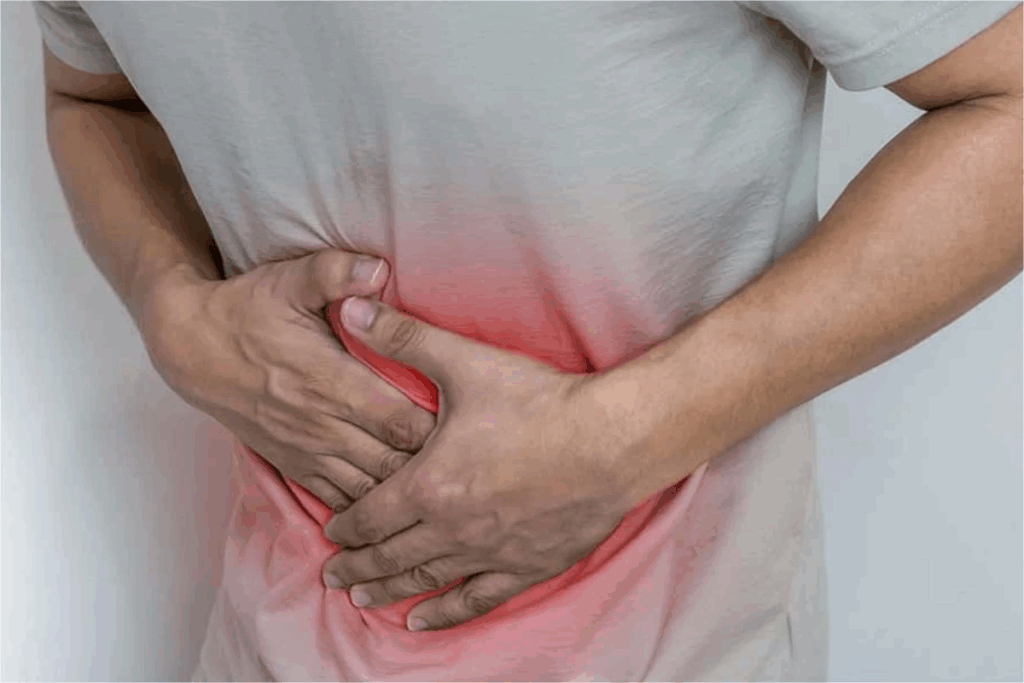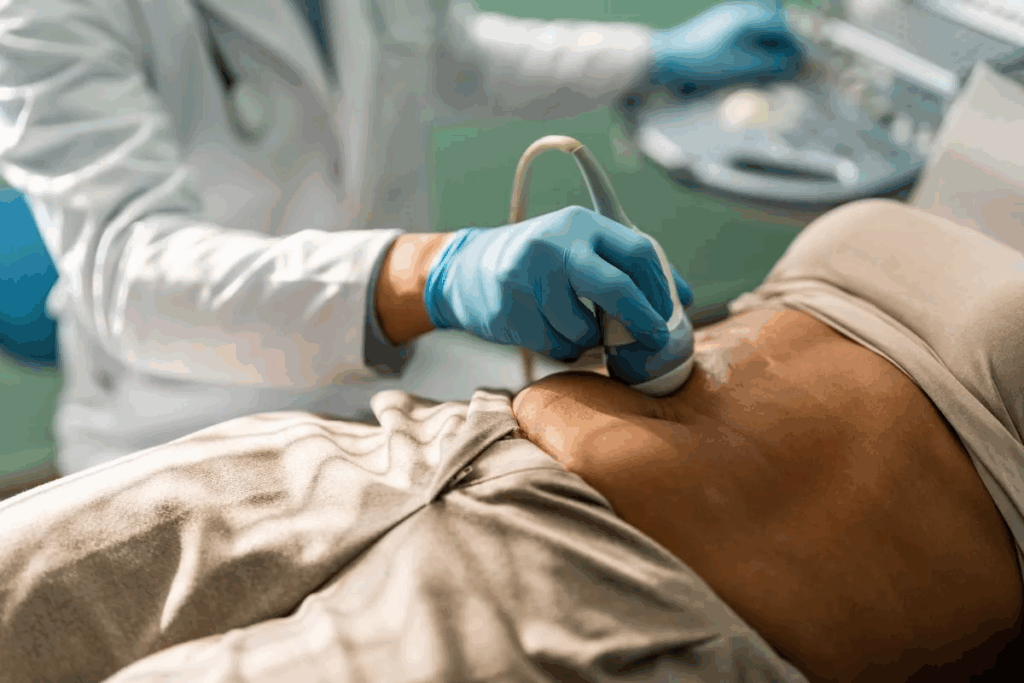Last Updated on October 30, 2025 by Bilal Hasdemir

Recovering from gallbladder surgery can be tough, with a persistent cough being a common issue. This cough often comes from leftover anesthesia or irritation from the endotracheal tube used during surgery. Learn recovery tips for coughing after gallbladder surgery and how to ease discomfort.
Knowing why you cough and how to stop it can help a lot. At Liv Hospital, we focus on patient care to help you heal well. Recovery usually takes 1 to 6 weeks, with most people getting back to normal in 1 to 2 weeks.

It’s important to know about gallbladder removal surgery to manage symptoms and recover well. This surgery, also called cholecystectomy, can be done in different ways. Each method has its own recovery time.
There are two main types of gallbladder surgery: laparoscopic and open cholecystectomy. Laparoscopic surgery uses small incisions in the abdomen. It’s chosen for its quick recovery and less pain.
Open cholecystectomy needs a bigger incision. It’s used for patients with certain complications or conditions.
Patients may feel pain, tiredness, and digestive problems after surgery. These include diarrhea or bloating. Some might also feel shoulder or back pain from the gas used in laparoscopic surgery.
The recovery time depends on the surgery type. Patients with laparoscopic cholecystectomy usually recover in 1-2 weeks. Those with open cholecystectomy may take 4-6 weeks or more.
| Surgery Type | Typical Recovery Time | Common Post-Operative Symptoms |
| Laparoscopic Cholecystectomy | 1-2 weeks | Pain at incision site, fatigue, digestive issues |
| Open Cholecystectomy | 4-6 weeks or more | More significant pain, longer hospital stay, increased risk of complications |

Coughing after gallbladder surgery can happen for several reasons. These include the effects of anesthesia and how the surgery was done. Knowing why it happens helps in treating it better.
Anesthesia is a big reason for coughing after surgery. General anesthesia can irritate the breathing system, causing coughs. Residual anesthesia makes airways more sensitive, leading to coughs as the body tries to get rid of irritants. This can last from hours to days, depending on the anesthesia used.
Throat irritation from the endotracheal tube (ETT) is another cause. The ETT is used to breathe during surgery. This tube can irritate the throat, vocal cords, and trachea, causing inflammation and discomfort that leads to coughing after surgery. This irritation is usually short-lived and goes away once the inflammation heals.
In laparoscopic cholecystectomy, the abdomen is filled with carbon dioxide gas. This gas can irritate the diaphragm and surrounding tissues, causing pain or discomfort that may lead to coughing. Though the body absorbs this gas quickly, some may feel discomfort or cough until it’s fully gone.
Medical experts say understanding post-operative coughing is key to managing it. A good approach to managing coughing after gallbladder surgery involves addressing the causes. These can be related to anesthesia, surgery, or individual factors.
Coughing after gallbladder surgery can be scary, but knowing what’s normal can help. Coughing is a natural response to many things after surgery.
Some coughing is normal after gallbladder surgery. This coughing is usually mild and goes away in a few days. Anesthesia and the endotracheal tube can irritate your throat. The gas used in laparoscopic surgery can also cause discomfort and coughing.
But, some coughing signs might mean trouble. Severe, lasting coughing, fever, chest pain, or trouble breathing need quick doctor visits. These could mean infections or other serious issues.
Knowing when to get help is key. If you have persistent coughing, cough up blood, severe chest pain, or a high fever, call your doctor. Your doctor can check your symptoms and help you.
Knowing the difference between normal and serious coughing after gallbladder surgery helps patients. By understanding what’s expected and what’s not, you can feel more confident in your recovery.
After gallbladder removal, patients often wonder about the recovery timeline. They want to know what to expect during this period. Knowing the recovery process helps manage expectations and ensures a smooth return to normal activities.
The first 48 hours after surgery are key. Patients often feel discomfort, fatigue, and nausea from the anesthesia. Rest is important during this time, with most patients resting for a day or two.
It’s vital to follow the doctor’s advice on pain management and any medications.
In the initial healing phase, patients start to feel better. Pain decreases, and energy levels rise. But, it’s important to avoid heavy lifting and strenuous activities to prevent complications.
Following a balanced diet and staying hydrated supports healing.
By weeks 2-6, most patients can start returning to normal activities. This includes light exercise, driving, and gradually resuming work or daily routines. Recovery rates vary, but listening to your body is key.
Several factors can affect recovery time after gallbladder removal. These include the patient’s health, age, any complications during or after surgery, and following post-operative instructions. Understanding these factors helps tailor the recovery plan to individual needs.
In conclusion, the recovery timeline after gallbladder removal varies but generally follows a predictable pattern. By knowing what to expect during each stage, patients can prepare better and minimize complications.
Coughing after gallbladder surgery can be uncomfortable. But, there are ways to manage it. It’s important to do this to reduce pain and help with healing.
Keeping the body in the right position is key to less pain while coughing. It’s best to avoid slouching or bending. These actions can strain the muscles and the incision site.
Instead, sit or lie down in a way that feels comfortable. Using pillows or cushions for back and abdomen support can also help.
Splinting the incision site means applying gentle pressure around the incision when coughing. This can lessen the strain and pain.
To do this, patients can use their hands or a small pillow for support. This method can help manage coughing discomfort.
Controlled breathing methods are also helpful. Deep, controlled breathing can calm the cough reflex and cut down on coughing.
Practicing diaphragmatic breathing is beneficial. It involves breathing deeply into the lungs, not shallowly into the chest. This can relax the body and lessen the urge to cough.
Recovering well after cholecystectomy means learning key breathing and coughing skills. These are important to avoid complications and help your body heal.
Deep breathing helps stop pneumonia by making sure your lungs are fully used and clear of secretions. Start by breathing in slowly through your nose, hold it for a few seconds, and then breathe out slowly through your mouth. Do this a few times.
Proper Technique: Sit or stand up straight. Put one hand on your belly and the other on your chest. Your belly should go up more than your chest when you breathe in.
An incentive spirometer is a tool that shows how well you breathe and helps your lungs work better. To use it right, sit up straight, breathe in slowly through the mouthpiece to move the indicator, and then breathe out slowly. Aim to keep the indicator in a certain area to show your lungs are expanding well.
Coughing is key to getting rid of lung secretions, but you must do it gently to avoid hurting your belly or incision. Before coughing, take a few deep breaths. Then cough with your belly muscles strong. You can use a pillow or your hands to support your incision and ease the strain.
Managing pain when coughing after gallbladder surgery is key. It involves using both medicine and non-medical methods. Good pain management helps patients cough, breathe, and move without pain. This reduces the chance of serious problems.
After gallbladder surgery, doctors often give pain meds. These can be opioids or non-opioid drugs, based on the pain and patient’s health. It’s important to take the meds as told and at the right time to get the most relief with the least side effects.
Proper use of prescribed medications includes:
There are also non-medical ways to ease pain when coughing after gallbladder surgery. These include:
When to take pain meds is very important. Taking them before pain gets bad helps keep pain relief steady. For those with pain when coughing, taking meds 30 minutes before coughing can help a lot.
Key considerations for timing pain medication include:
Supportive aids are key for a comfy recovery after gallbladder surgery. They help reduce pain and aid in healing. They support the belly area well.
A gallbladder pillow is made for belly support, focusing on the incision. It helps lessen movement that can bother the incision. This reduces pain when coughing or moving.
The pillow also reduces strain on the abdominal muscles. This lets patients move more easily. It’s best to use it when coughing, sneezing, or laughing to protect the incision.
Abdominal binders and compression clothes also offer comfort during recovery. They apply gentle pressure to the belly. This reduces pain and gives a sense of stability.
They’re great in the early recovery stages when the belly is most sensitive. Wearing them can lessen discomfort and make moving around easier.
Changing your home can also help with recovery. Simple changes like putting important things within reach can avoid the need for hard movements.
Also, keeping your home well-ventilated and at a comfy temperature can improve recovery. It’s good to make a restful and clutter-free space to help with healing.
Eating right and staying hydrated are key to getting better after gallbladder surgery. What you eat affects how fast and well you recover.
Some foods can upset your stomach or cause coughing. It’s best to skip spicy, fatty, or heavy meals early on.
Eating foods high in fiber helps your digestive system. Good choices include:
| Food | Fiber Content (grams per serving) |
| Oatmeal | 4 |
| Banana | 3 |
| Broccoli | 5 |
Drinking enough water is vital for healing. Drink lots of water and cut down on caffeinated drinks that make you lose water.
Hydration Tips:
Start with liquids and slowly add solid foods. Begin with clear liquids and then move to thicker foods as your body can handle it.
By sticking to these diet and hydration tips, you can help your body heal faster and avoid complications after gallbladder surgery.
Recovering well from gallbladder surgery requires good care after surgery, managing pain, and making lifestyle changes. It’s key to handle coughing well, as it can cause pain and other problems.
Following certain tips can help, like eating right, using abdominal binders, and doing breathing exercises. Knowing that everyone recovers at their own pace is important. Stick to your doctor’s recovery plan.
Controlling cough, eating well, and using pain meds right can make recovery smoother. These steps help you get back to your life faster.
Recovery from gallbladder surgery can take 2-6 weeks. People usually get back to normal in this time frame. Laparoscopic surgery tends to have a quicker recovery than open surgery.
Coughing after surgery can be due to anesthesia effects, throat irritation, or gas used in laparoscopic procedures.
After surgery, you might cough occasionally, mainly when breathing deeply or moving. But, if coughing is persistent or severe, it’s not normal and you should tell your doctor.
Contact your doctor if you cough a lot, cough up blood, or have trouble breathing. Also, if you have a fever, chills, or pain that gets worse, seek help.
To manage coughing, try coughing in a sitting position, splint the incision site, and use controlled breathing. A gallbladder pillow or abdominal binder can also help.
Avoid foods that might trigger coughing or discomfort. Choose high-fiber foods for better digestion. Drink plenty of water and gradually increase your diet after surgery.
Yes, you can use pain medication as directed by your doctor. Following the dosage and timing is key to its effectiveness.
Preventing pneumonia involves deep breathing exercises and using an incentive spirometer correctly.
Comfort aids include a gallbladder pillow, abdominal binders, and making your home environment more comfortable.
Healing from gallbladder removal usually takes 4-6 weeks. But, your recovery time can vary based on your health and the surgery type.
Shrestha, G. (2023). Spigelian hernia: A rare case presentation and review of literature. Journal of Surgical Case Reports. Retrieved from https://www.sciencedirect.com/science/article/pii/S2210261223002079
Subscribe to our e-newsletter to stay informed about the latest innovations in the world of health and exclusive offers!
WhatsApp us